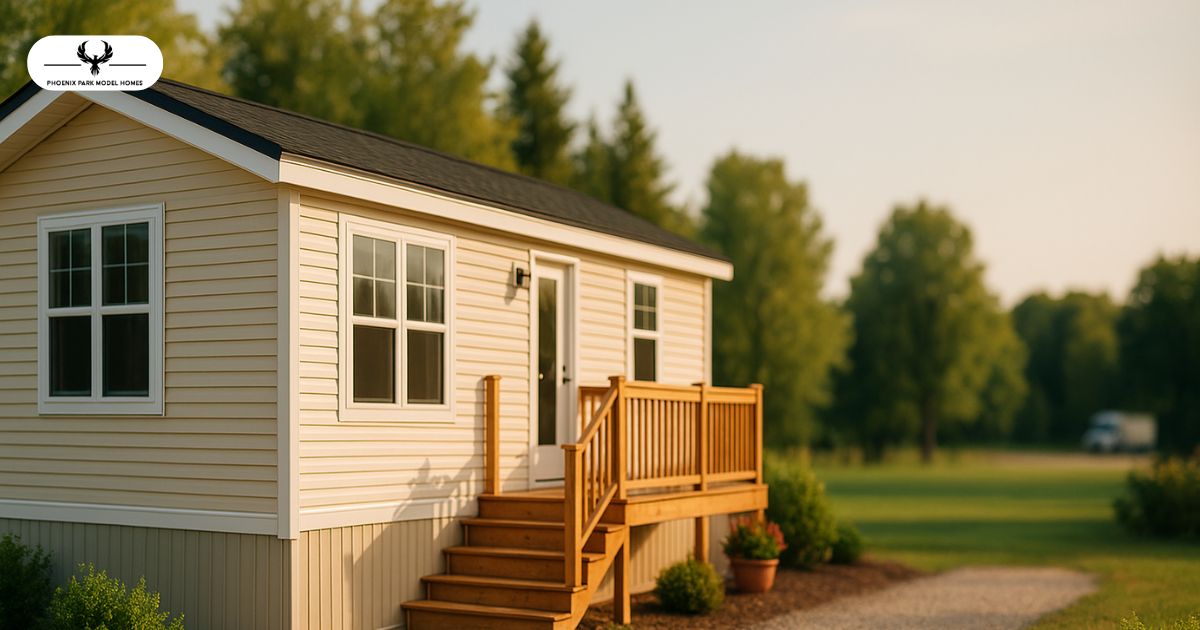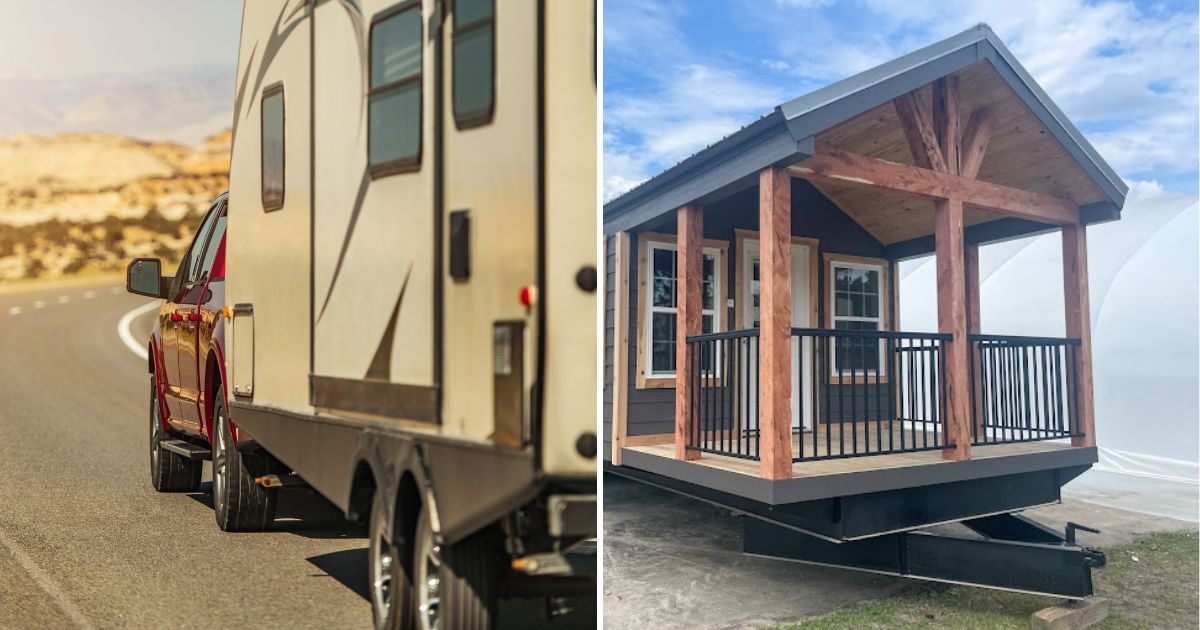Missed prep and poor hookups cause costly delays, damage, and extra expense.
This checklist gives practical steps to prepare, level, connect utilities, and finish your park model so it stays safe and comfortable.
1. Site Preparation
Clear the Path: Ensure a clear, level path with at least 16 ft of horizontal and vertical clearance. Remove any obstacles like low-hanging branches or wires.
Verify Accessibility: Confirm that the delivery route is accessible and free from obstructions.
Home Site: Ensure the foundation is level and firm to support the park model.
2. Delivery Coordination
Schedule Delivery: Coordinate with the delivery team to schedule a convenient delivery time.
On-Site Presence: Be present during delivery to guide the placement and address any immediate concerns.
Inspect Upon Arrival: Conduct a thorough inspection of the park model upon delivery to ensure no damage occurred during transit.
3. Positioning the Park Model
Optimal Placement: Position the park model to maximize natural light and ventilation, considering prevailing wind directions.
Access Points: Ensure easy access to doors, windows, and utility connections.
Aesthetic Considerations: Align the park model to complement the surrounding landscape and any existing structures.
4. Leveling and Stabilization
Use Leveling Jacks: Employ 10-ton air jacks to raise the park model evenly.
Install Blocking: Place wood blocks or piers at intervals not exceeding 8 ft to support the structure.
Final Leveling: Use shims to fine-tune the leveling process, ensuring the park model is perfectly level.
5. Utility Connections
Electrical Hookup: Connect to a 50 or 100-amp service, depending on your park model’s requirements.
Water Supply: Connect to a potable water source, ensuring all connections are secure and leak-free.
Sewer Connection: Connect to a sewage system, using appropriate hoses and fittings to prevent leaks. Inspect Connections: Check all utility connections for proper installation and functionality.
6. Skirting Installation
Material Selection: Choose from vinyl, wood, metal, or composite materials based on durability and aesthetic preference.
Proper Ventilation: Ensure the skirting allows for adequate airflow to prevent moisture buildup.
Secure Installation: Install skirting securely to prevent pests from entering and to enhance the park model’s appearance.
7. Deck and Exterior Features
Deck Construction: Build a deck that complements the park model, adhering to local building codes.
Exterior Lighting: Install outdoor lighting to enhance visibility and security.
Landscaping: Add plants, shrubs, or decorative elements to integrate the park model into its environment.
8. Interior Setup
Furniture Arrangement: Arrange furniture to maximize space and functionality.
Appliance Setup: Ensure all appliances are properly installed and connected. Safety Checks: Test smoke detectors, carbon monoxide detectors, and fire extinguishers.
Climate Control: Set up heating and cooling systems for optimal comfort.
9. Final Inspection
Structural Integrity: Check for any signs of settling or shifting.
Utility Functionality: Test all utilities to ensure they are functioning correctly.
Cleanliness: Clean the interior and exterior to remove any construction debris.
Documentation: Keep a record of all inspections and installations for future reference.
10. Weatherproofing Your Park Model
Insulate Properly: Ensure that your park model is properly insulated to maintain a comfortable interior temperature year-round. This will prevent heat loss in winter and keep the home cool in the summer.
Weatherproof Windows: Use weatherstripping around windows and doors to block drafts and reduce energy costs. Consider adding storm windows if you’re in an area prone to harsh weather conditions.
Check Roof Seals: Ensure that the roof is properly sealed to prevent leaks during rain or snow, which can lead to costly damage.
Gutter Installation: Install gutters to direct water away from your park model to avoid water damage and erosion around the foundation.
11. Install Ventilation Systems
Proper Ventilation: Ensure your park model has proper ventilation to maintain indoor air quality. Use exhaust fans in the kitchen and bathroom to control moisture and odors.
Airflow Management: Consider installing ceiling fans or small window fans to circulate air throughout the space and reduce stale air.
Attic Ventilation: If your park model has an attic or loft, ensure that the space is well-ventilated to prevent moisture buildup and maintain air circulation.
12. Set Up a Trash and Waste Disposal System
Trash Bins: Keep a designated trash area outside your park model for easy waste disposal. Consider adding a composting system for organic waste to help with sustainability.
Waste Management: If you’re in a remote location, make sure to connect to a proper sewage system or arrange for regular waste removal services.
Recycling Options: Set up a separate container for recycling to minimize waste and stay eco-conscious.
13. Check for Pests
Pest-Proof the Perimeter: Before setting up your park model, ensure that the area around your home is clear of debris and standing water where pests can thrive.
Install Skirting: Install tight-fitting skirting around your park model to prevent animals from nesting underneath the home. Skirting also helps reduce moisture buildup and prevents rodents and insects from entering.
Regular Inspections: Inspect your park model regularly for signs of pests, such as chewed wires, droppings, or nests. Early detection can help prevent infestations.
14. Personalize the Interior and Exterior
Interior Decor: Customize your park model’s interior by adding personal touches, such as art, pillows, throw blankets, and curtains to make the space feel like home.
Exterior Touches: Consider installing a deck, patio, or outdoor furniture to enhance your outdoor living area, providing a comfortable space to relax and entertain.
Lighting: Install outdoor lights to brighten up the area around your park model, and consider adding solar-powered lights for an eco-friendly touch.
Pro Tips for a Successful Setup
Professional Assistance: Consider hiring professionals for tasks like leveling, utility connections, and skirting installation to ensure safety and compliance with local codes. Local Regulations: Check with local authorities regarding zoning laws, building codes, and permit requirements before starting the setup process. Maintenance Plan: Develop a maintenance schedule to keep your park model in optimal condition, including regular inspections and servicing of utilities.
Conclusion
Setting up your park model home is a significant step towards creating a comfortable and functional living space. By following this comprehensive checklist, you can ensure a smooth setup process that adheres to safety standards and enhances the longevity of your park model. Remember, thorough preparation and attention to detail are key to enjoying your new home for years to come. If you need assistance with any of these steps or have questions about specific requirements, feel free to reach out. We’re here to help you every step of the way!












